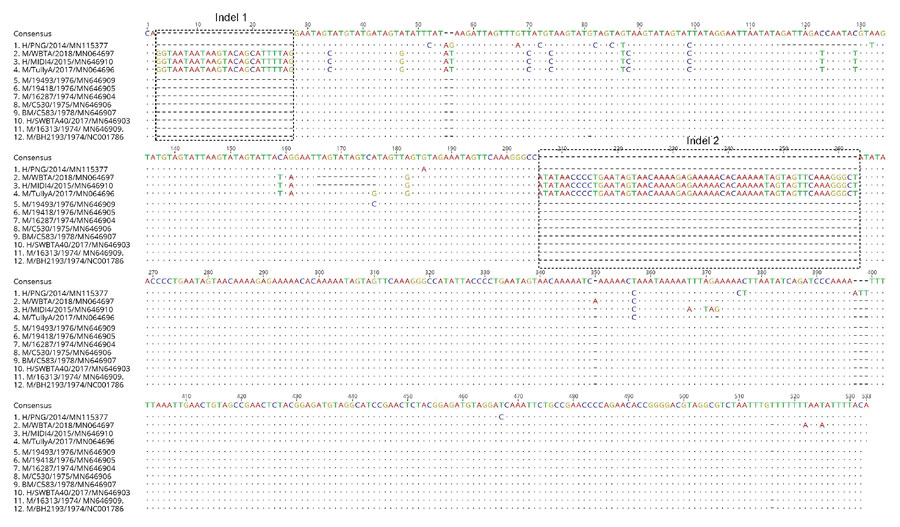Volume 26, Number 12—December 2020
Dispatch
Circulation of 2 Barmah Forest Virus Lineages in Military Training Areas, Australia
Figure 1

Figure 1. Nucleotide alignment of 3′ untranslated region sequences of Barmah Forest virus strains from Australia with that of the prototype BH2193 strain using muscle alignment method in Geneious version 11.2 (https://www.geneious.com). The dots indicate the consensus sequence of Barmah Forest virus strains, whereas letters in individual sequences indicate nucleotide substitutions. Dashes indicate insertions/deletions. The naming convention of the strains is name of host/strain/year of isolation/GenBank accession number. H, humans; M, mosquitoes; BM, biting midges.
Page created: October 20, 2020
Page updated: November 19, 2020
Page reviewed: November 19, 2020
The conclusions, findings, and opinions expressed by authors contributing to this journal do not necessarily reflect the official position of the U.S. Department of Health and Human Services, the Public Health Service, the Centers for Disease Control and Prevention, or the authors' affiliated institutions. Use of trade names is for identification only and does not imply endorsement by any of the groups named above.